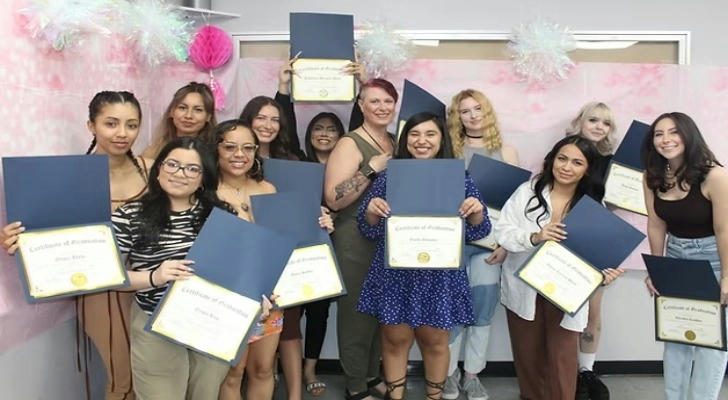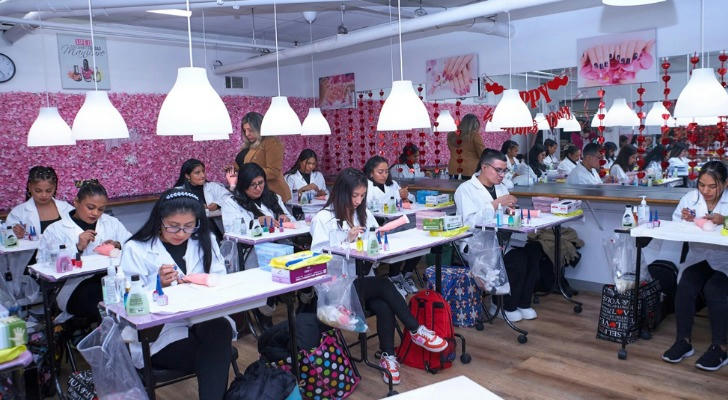Nail Classes for Beginners,help you start your nail art business easily!
Want to enter the nail art industry but worried about the high cost or lack of foundation? Now,Many institutions now offer paid training and provide Nail Classes for Beginners that support certification, and some also provide Government-subsidized nail art courses, providing a stable career path for you who want to quickly enter the nail industry.
1. Benefits of taking nail classes for beginners?

Get employment support: Many organizations work with nail salons to provide direct employment opportunities;
Professional certificate certification: After passing the exam, there is an opportunity to receive certificate support;
Flexible course arrangement: Suitable for groups such as mothers and part-time practitioners;
Low threshold for entrepreneurship: you can choose to take orders freely, rent a table or open a business individually, with small equipment investment and fast start-up speed.
2. Which nail art courses offer financial aid from the government?
🏛️ Nail courses with government financial assistance
1.American Job Centers
•Highlights: Paid training | Living allowance | Employment opportunities
The U.S. Department of Labor's employment center cooperates with vocational schools in many places to provide skills training such as nail art. Most of the courses are short-term programs, providing tuition + accommodation + meals + certificate training, and including job placement support, suitable for young women with no experience to enter the nail industry.
2.CT State Nail Program
Highlights: Financial assistance | Certification preparation | Employment matching
The course is 100 hours long and can be completed in about 3-5 weeks. After completion, you can obtain a certificate of completion and apply for a state license. Provide government financial assistance.
🥇Local community colleges and professional nail schools

1.Empire Beauty School:A nationwide chain that offers a variety of financial aid, including scholarships and federal student aid, and provides job recommendations after the program.
2.Laney College: Public community college, supports Pell Grant, Cal Grant, Work-Study (federal paid part-time), and students can apply for work-study to earn income, which is suitable for low-income or career changers. And provides employment counseling and internship opportunities
3.San Diego City College: Encourages application for FAFSA (Federal Student Aid), and eligible students can use Pell Grants or other grants to cover tool fees, uniforms and textbooks
3. What Do Nail Classes for Beginners Include?
•Course duration: 100 hours or so, can be completed in about 3 weeks, some may take longer!
•Course language: Available in multiple languages including English, Spanish and Vietnamese.
Basic knowledge of nail art: Understand the basic knowledge of nail structure, characteristics of nail art products, etc.
Nail art design and painting: Learn various nail art design techniques and painting methods, including the extension and shaping of crystal nails.
Nail beautification and repair: Master the techniques of nail beautification and repair, and combine basic pedicure care to improve overall service.
Nail salon management: Learn how to manage and operate a nail salon.
Customer service skills: Learn how to provide high-quality customer service.
4. Real case: From full-time mother to nail technician

Emily is a stay-at-home mom. She had no experience in nail art and was worried about the cost of learning. She completed the training and obtained a license through the government-supported nail art course provided by CT State Nail Program. She then interned in a local salon and became a full-time employee. After accumulating experience, she opened her own nail art studio. Today, Emily has her own small nail art studio and earns an average of more than $3,500 per month.
5. How to Enroll and Start Nail Classes for Beginners?
1. Choose a course: Go to the official website to select your region and course direction;
2. Submit an application: Submit personal information, education and income information;
3. Apply for funding: Fill out financial aid application forms such as Pell Grants;
4. Start training: After formal admission, receive the teaching materials and start learning;
